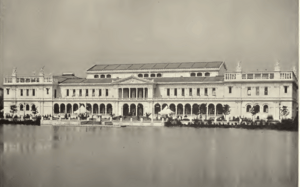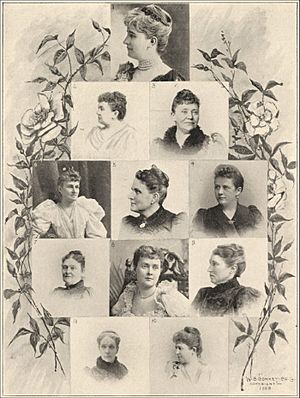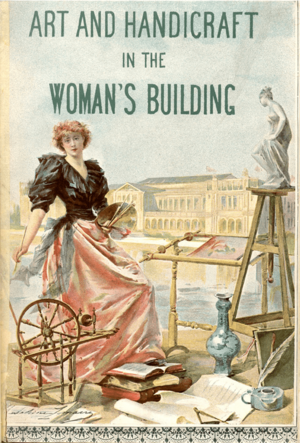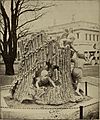The Woman's Building (Chicago) facts for kids
The Woman's Building was a special place built for the World's Columbian Exposition in Chicago in 1893. This big event was like a world fair, showing off new ideas and achievements. The Woman's Building had rooms for exhibits, a meeting hall, a library, and a Hall of Honor. It was a unique space to celebrate the work of women from all over the world. People at the time said it would be a long time before so much amazing work by women could be seen together again.
Contents
How the Woman's Building Started
In 1889, a group of active women in Chicago worked hard to have their city host the 1892 world's fair. They also asked for women to have an official role in planning the fair and showing exhibits. These women were led by Emma Gilson Wallace. They suggested creating a "Women's Department for the Fair." These activists came from different women's groups. These groups focused on helping others, education, and getting women the right to vote.
A committee in the Senate, which was planning the 400th anniversary of Christopher Columbus's first trip to the New World, approved Chicago as the fair's location. When the plan went to the House of Representatives, William McKendree Springer added an important change. This change created a group called the Board of Lady Managers. The House agreed, and in 1890, President Benjamin Harrison signed the bill into law.
The National Commission chose 117 women to be on the Board. This included two Lady Managers from each state and territory, plus other members. One of their main jobs was to plan the Woman's Hall, which became the Woman's Building.
Who Were the Lady Managers?
The Board of Lady Managers had many important women. They worked to make the Woman's Building a success.
Here are some of the key leaders:
- Mrs. Bertha Palmer – She was the President of the Board.
- Mrs. Susan G. Cook – She served as the Secretary.
- Mrs. V.C. Meredith – She was the Vice Chairman of the Executive Committee.
- Mrs. Russell B. Harrington – She was a Vice-President at Large.
- Mrs. John A. Logan – She was the Vice-Chairman of the Committee on Ceremonies.
Many other women served as Vice-Presidents and Resident Members, helping to guide the project.
Designing the Building
Fourteen women architects submitted their ideas for the Woman's Building. The Board of Architects chose the design by Sophia Hayden. She was a young architect who created a beautiful and grand building.
Other talented women also helped bring the building to life:
- Alice Rideout was the official sculptor. She made the sculptures on the outside of the building.
- Enid Yandell designed and created the caryatid figures. These were sculpted female figures that looked like they were holding up the roof garden.
- Candace Wheeler was in charge of decorating the inside of the building.
The inside of the building was filled with amazing art. Murals were painted by famous artists like Mary Fairchild MacMonnies Low and Mary Cassatt. Cassatt painted a huge mural called "Modern Woman." It showed how women had progressed throughout history. Other artists like Lucia Fairchild Fuller and Rosina Emmet Sherwood also painted panels in the Hall of Honor. The library ceiling had a beautiful mural by Dora Wheeler Keith.
What Was Inside the Woman's Building?
The Woman's Building showcased many works created by women. These exhibits covered a wide range of fields. You could see fine art, crafts, literature, and music. There were also displays about science and home economics. The building also featured exhibits about women in American history and from other cultures around the world.
Next to the Woman's Building was the Children's Building. This building showed the best ways to raise and educate children in the 1800s.
The Building's Lasting Impact
Many buildings at world's fairs are torn down after the event ends. The Woman's Building was also destroyed after the fair. Sadly, many of the artworks, including Mary Cassatt's large mural, were put into storage and later lost.
Even though the building was gone, its spirit lived on. Eighty years later, in the 1970s, women started looking back at their history. A feminist artist named Judy Chicago found a catalog from the Woman's Building. This discovery inspired her and her team. When a new art organization called the Los Angeles Woman's Building opened in 1973, its founders named it after the original 1893 building. This helped keep the memory of the Woman's Building alive.
The exhibits also inspired others. A Danish noblewoman, Sophie Oxholm, saw the Woman's Building. She was so impressed that she organized a women's exhibition in Copenhagen in 1895.
Gallery
See also
 In Spanish: Edificio de la Mujer para niños
In Spanish: Edificio de la Mujer para niños












